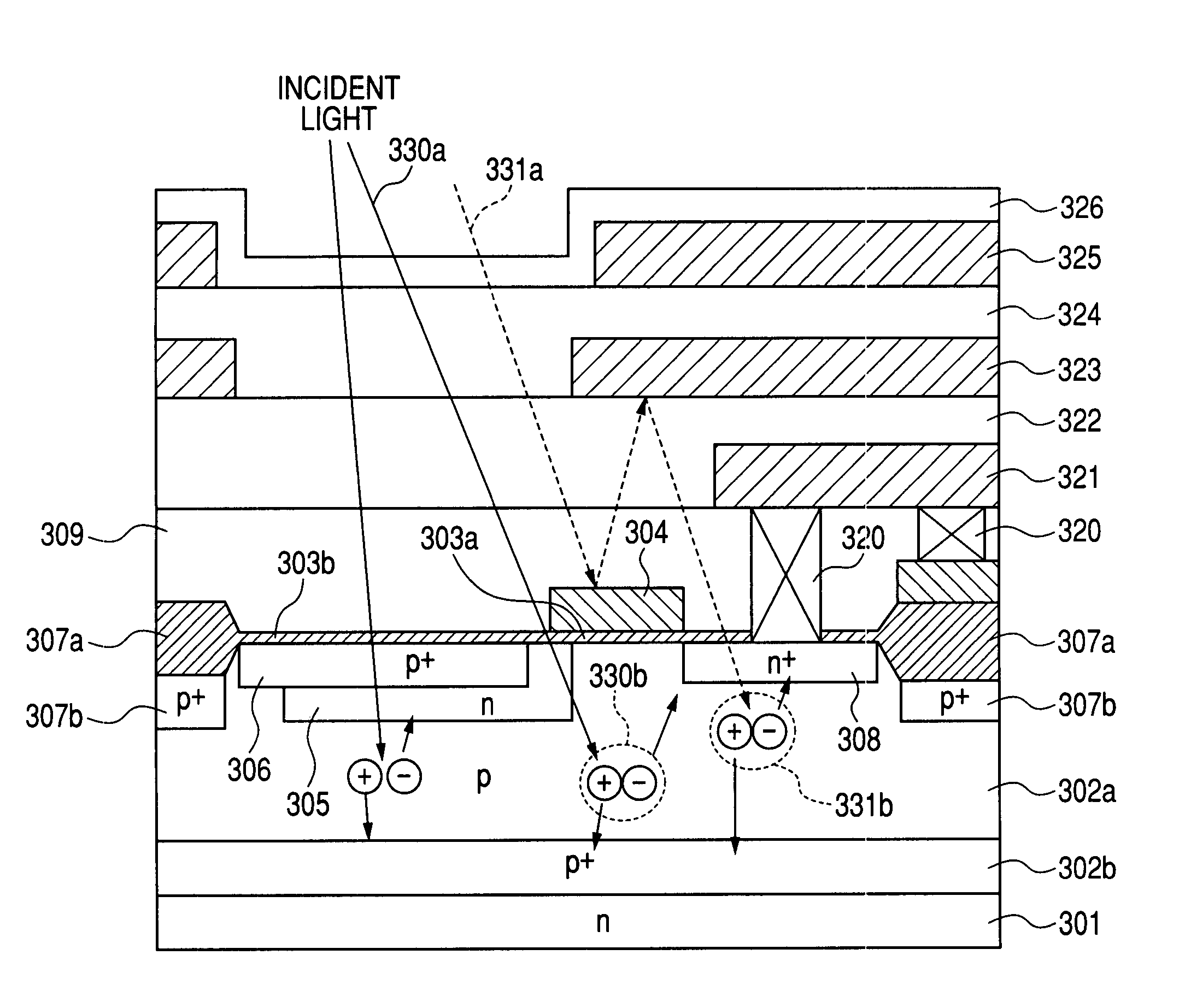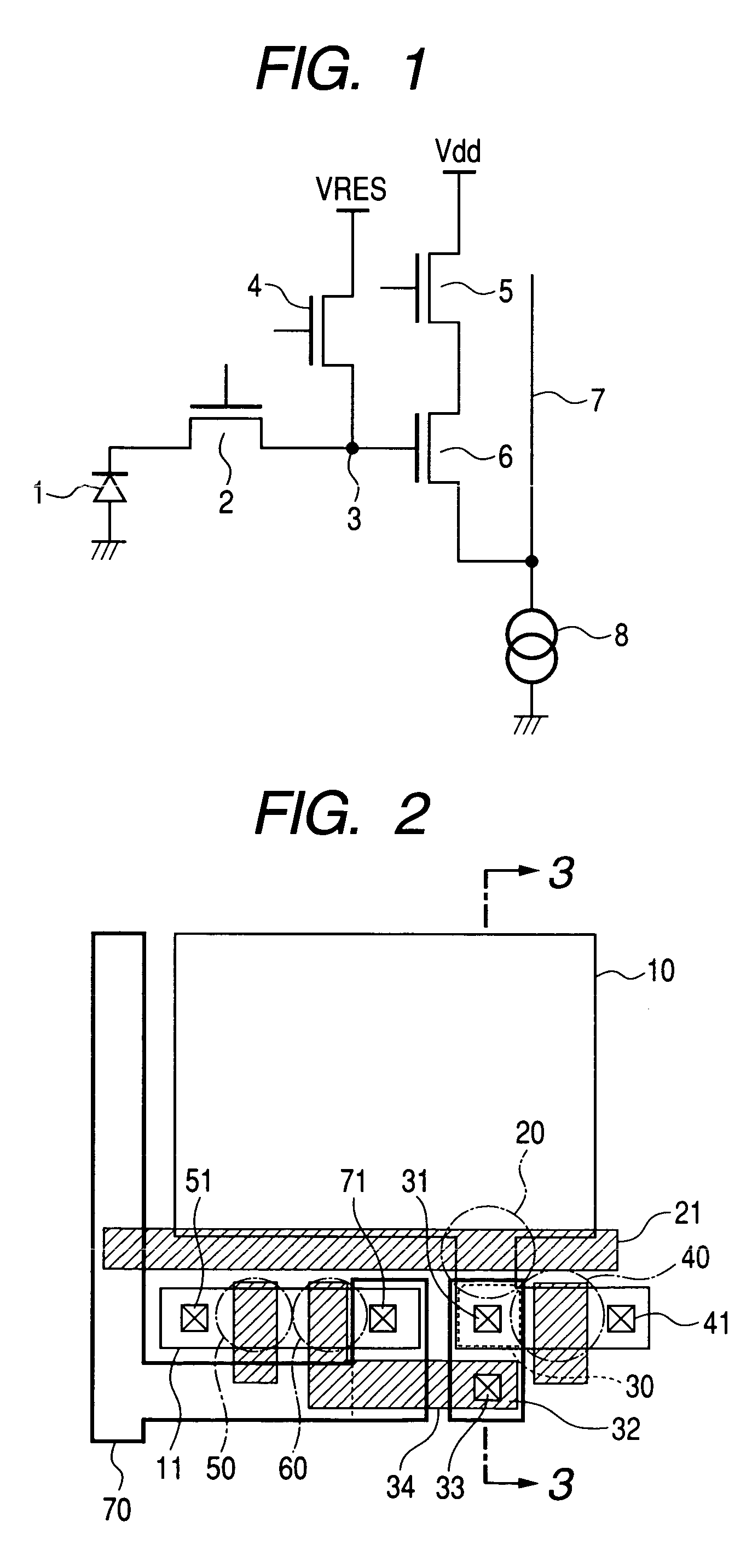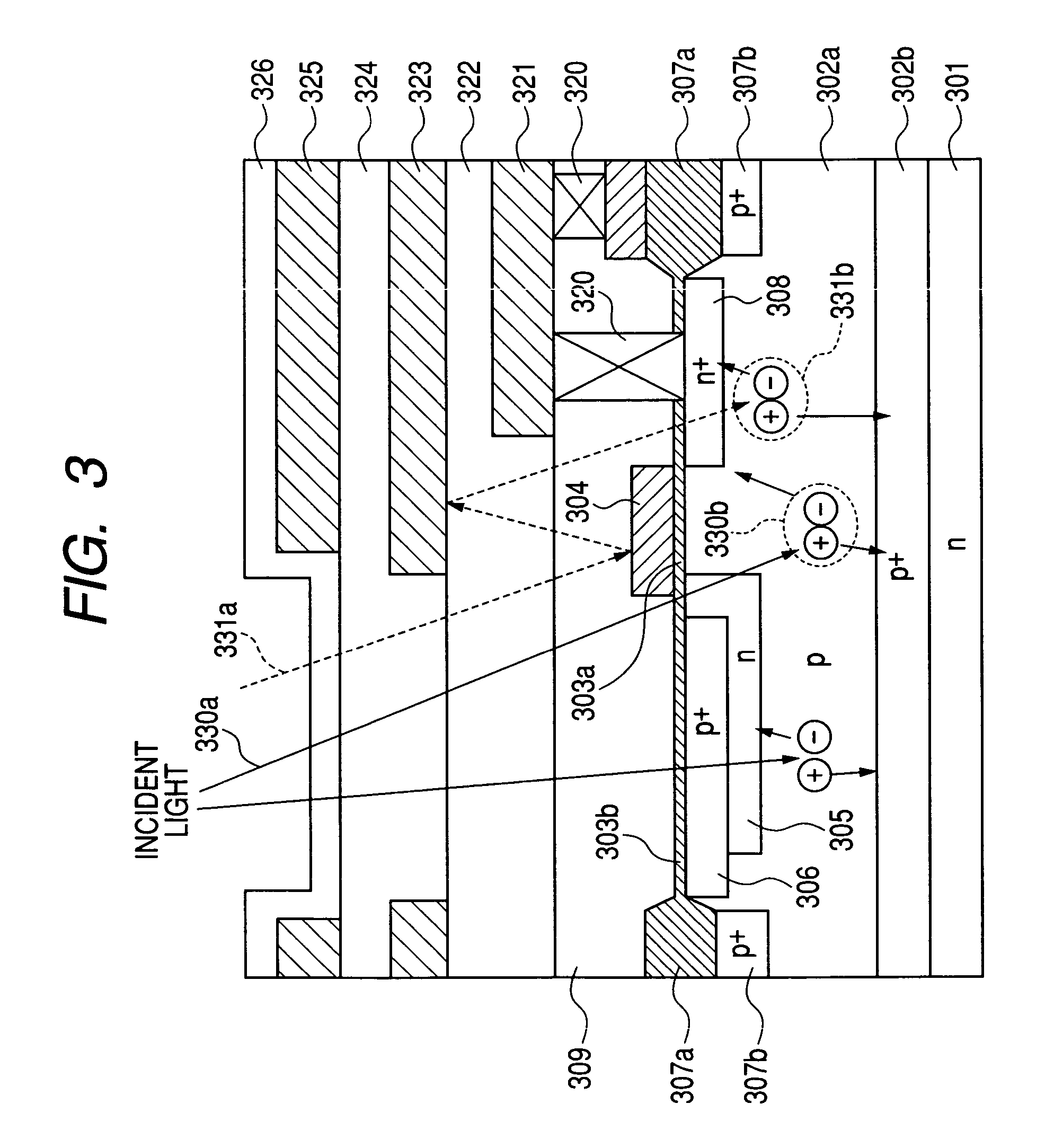Solid-state image pick-up device and imaging system using the same
a solid-state image and imaging system technology, applied in the direction of television systems, semiconductor/solid-state device details, radio-controlled devices, etc., can solve the problems of high drive voltage, large power consumption, and high cost, and achieve the effect of improving the shading characteristic of floating diffusion, enhancing the dynamic range and an s/n
- Summary
- Abstract
- Description
- Claims
- Application Information
AI Technical Summary
Benefits of technology
Problems solved by technology
Method used
Image
Examples
first embodiment
[0050]FIG. 4 shows a layout of a pixel circuit for explaining a first embodiment according to the present invention. Reference numeral 110 denotes an active area in which a photodiode is formed, and 111 denotes an active area in which a selection MOS transistor and a source follower transistor are formed. Reference numeral 120 denotes an area of a transfer MOS transistor and 121 denotes a gate line of the transfer MOS transistor. An area 130 surrounded by a broken line shows a portion formed of a PN junction of semiconductor in the floating diffusion.
[0051] A difference from the prior art form is that leading-out of an electrode from the floating diffusion is effected by a direct contact with a polysilicon 131. The polysilicon 131 serves directly as a gate electrode of a source follower MOS transistor with no intermediary of a metallic electrode. Reference numeral 132 denotes a shading metal covering over the floating diffusion, which shading metal in the present embodiment covers ...
second embodiment
[0062]FIG. 6 is a sectional view of a pixel section of a solid-state image pick-up device of a second embodiment according to the present invention. Reference numeral 601 denotes an n-type silicon substrate, 602a denoting a P-type well, 602b denoting a P-type embedded layer, 603a denoting a gate oxide film of a MOS transistor, 603b denoting a thin oxide film on a light receiving section, 604 denoting a gate electrode of a transfer MOS transistor, 605 denoting an N-type cathode of the photodiode 1, 606 denoting a surface P-type region for making the photodiode formed into an embedded structure, 607a denoting a LOCOS oxide film for element isolation, 607b denoting a P-type channel stop layer, and 608a denoting an N-type high concentration region which forms a floating diffusion and which is also formed to be a drain region of the transfer MOS transistor. Reference character 608b denotes a polysilicon lead-out electrode brought into direct contact with the N-type high concentration reg...
third embodiment
[0064]FIG. 7 is a sectional view of a pixel section of a solid-state image pick-up device of a third embodiment according to the present invention. Reference numeral 701 denotes an N type silicon substrate, 702 denoting a embedded P-type high concentration layer, 703a denoting an N-type epitaxial layer, 703b denoting an N-type cathode of a photodiode, 704a, 704b, 704c denoting P-type isolation layers, and 705a, 705b, 705c denoting P-type well layers. Reference characters 706a, 706b denote channel stop P-type layers below a field oxide film. Reference numeral 714 denotes a field stop layer defining a charge transfer path to a floating diffusion to form a potential barrier directly under a transfer MOS transistor, 707 denoting the field oxide film, 708 denoting a gate oxide film of a MOS transistor, 709a denoting a gate polysilicon of the transfer MOS transistor, on which surface a metal silicide layer 709b is provided and 710 denoting a surface P-type layer for forming the photodiode...
PUM
 Login to View More
Login to View More Abstract
Description
Claims
Application Information
 Login to View More
Login to View More - R&D
- Intellectual Property
- Life Sciences
- Materials
- Tech Scout
- Unparalleled Data Quality
- Higher Quality Content
- 60% Fewer Hallucinations
Browse by: Latest US Patents, China's latest patents, Technical Efficacy Thesaurus, Application Domain, Technology Topic, Popular Technical Reports.
© 2025 PatSnap. All rights reserved.Legal|Privacy policy|Modern Slavery Act Transparency Statement|Sitemap|About US| Contact US: help@patsnap.com



